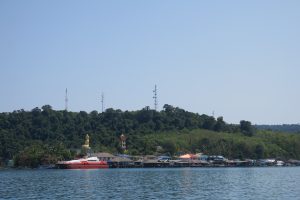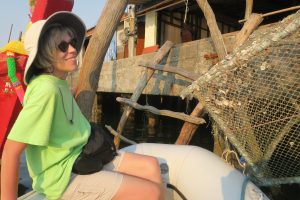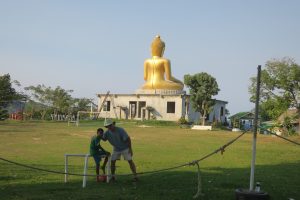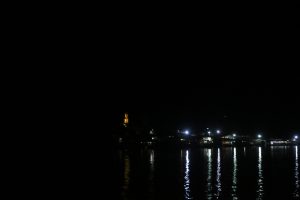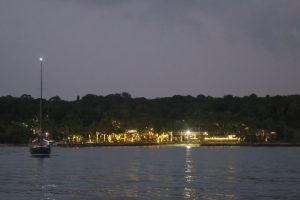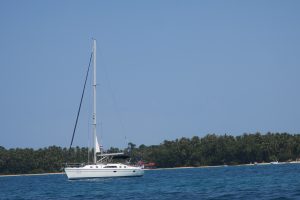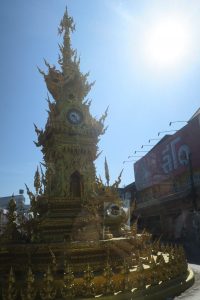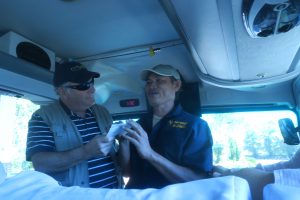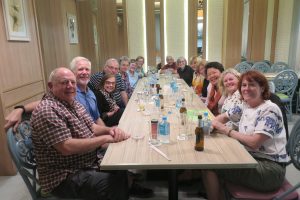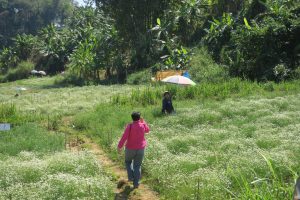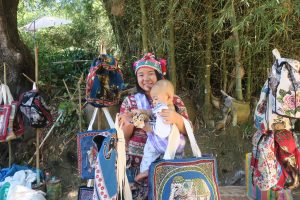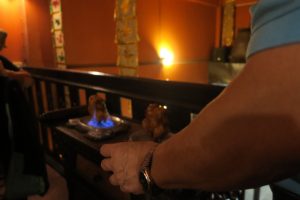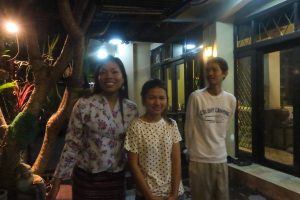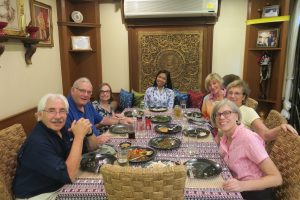We were up early, 5:30. At around 8, we dinghed back to the resort thinking we might get some breakfast but they just had a big buffet and I wasn’t into that. So we came back to the boat and I had a bowl of cereal. We waited to get the weather report from Phil before figuring out where we wanted to spend the night. We decided to head towards the northeastern side of Koh Kut to a bay called Ao Salat. The seas were a little rocky which always puts me to sleep. So Rick had a nice sail and I had a nice nap. We sailed up the side of the island and turned right along the top of the island. We pulled into Ao Salat and were the only sailboat there. There were a lot of fishing boats, an interesting little village along the dock and a golden Buddha on the hill.
After anchoring we went ashore. Our cruising guide said just tie up along the pier near a ladder. There were so many fishing boats we had trouble finding an open spot. Here’s where we ended up.
We walked along the pier and looked around. The OAT portion of our trip showed us the life of a Thai farmer. This was a lesson on the life of a Thai fisherman. The houses were very basic and opened right up onto the pier. There was a second row of houses behind the first. No such thing as locking your dock, they didn’t even have a door. Most people had very little furniture. Everyone seemed to have a TV.
We walked up to the Buddha and climbed the bell tower for some amazing views.
There were monks at the monastery and a young boy, Doa, who introduced himself to us, but that was about all he could do in English.
We also met a nice German couple who was staying in Bang Bao. They gave us a map and told us about some other things to do on Koh Kut. We looked at some restaurants but decided it would be better to eat on the boat. As we were returning to our boat around 5:00 many of the fishing boats were going out.
They all seem to have banks of bright lights which we though they used while they were processing the fish. Later we learned that the lights were used to attract the squid they were out for.
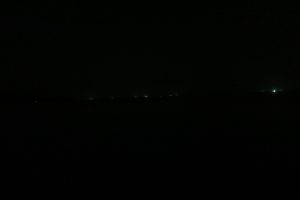
That evening Rick made red curry with pork and we ate on the boat. Here’s a picture of the Buddha at night.
The water was very calm and we had a nice breeze so we slept great.

